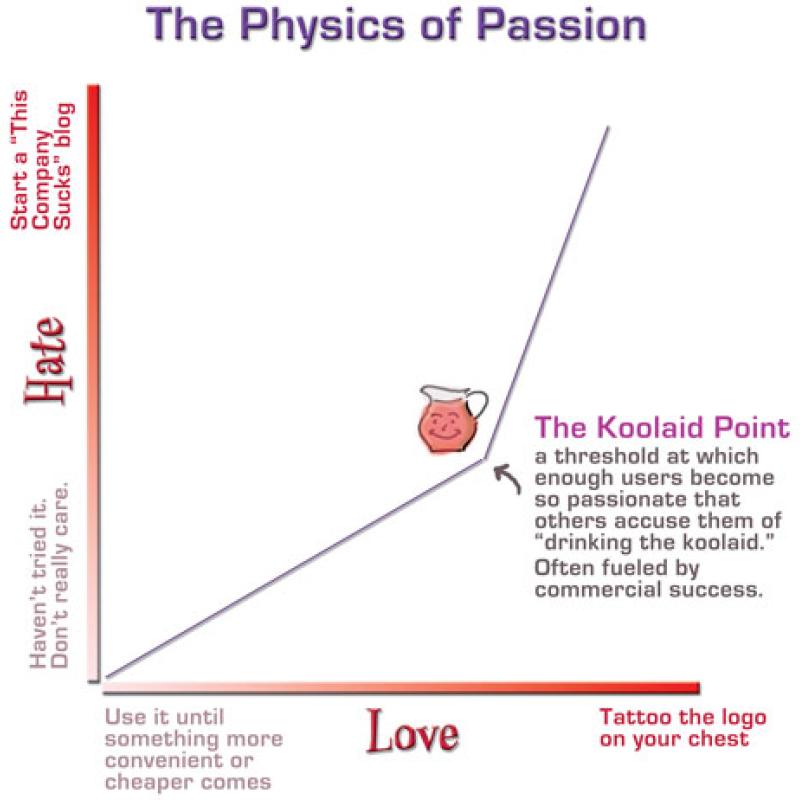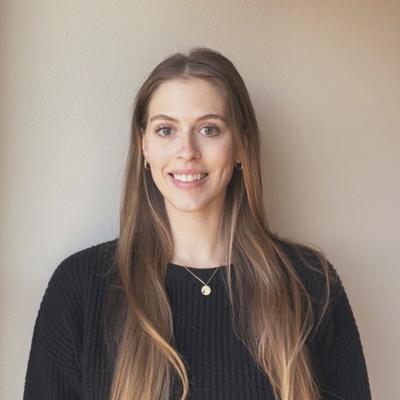When the Kool‑Aid Kicks In
Ty Tuff writes about the "Kool-Aid Point" in Science in this blog
In 1978, more than 900 people died in Jonestown, Guyana, after drinking poisoned Flavor Aid at the urging of cult leader Jim Jones. Yet the popular phrase “drinking the Kool‑Aid” actually blends this tragedy with a very different cultural memory: the “Kool‑Aid Acid Test,” a term coined by author Tom Wolfe in the 1960s to describe LSD‑fueled gatherings where participants fully surrendered to psychedelic experiences. Over the decades, the phrase evolved into shorthand for any moment someone buys in completely—when skepticism vanishes and belief takes over.
In 2005, Kathy Sierra gave that moment a name: the “Kool‑Aid Point.” It’s the phase where a new idea or technology stops being evaluated on its merits and starts being embraced—or rejected—on faith.

https://headrush.typepad.com/creating_passionate_users/2005/08/physics_of_pass.html
At first, there’s balance. Early adopters experiment. Skeptics question. Most people hover quietly in the middle, curious but undecided. But then, inevitably, the believers cross an invisible threshold. They don’t just use the thing—they identify with it. They evangelize. They host workshops. They tell their friends they can’t imagine life without it.
And then comes the backlash.
Because the Kool‑Aid Point isn’t just about belief—it’s about polarization. The stronger the love grows, the sharper the resistance becomes. Fence-sitters vanish. The discourse hardens into a duel between evangelists and critics, with little room left for quiet pragmatism.
This is where AI finds itself today.
For the past two years, large language models—ChatGPT, Claude, Gemini—hovered in that delicate pre-Kool‑Aid phase. Half the people I talk to are enchanted. They’re building tools, automating workflows, drafting papers in half the time. The other half remain skeptical, warning that AI is shallow, derivative, and prone to dangerous errors.
But balance never lasts.
We’ve tipped.
The believers have gone all in. And it’s not hard to see why. AI isn’t just an abstract promise for them—it’s delivering results. Scientists are coding faster, analyzing satellite imagery in hours instead of weeks, and harmonizing sprawling datasets that once felt unmanageable. It works. And every success deepens their commitment. For these early adopters, AI isn’t just a tool; it feels like a paradigm shift. They’ve integrated LLMs into research pipelines, written instruction manuals, and begun reshaping entire disciplines around their capabilities.
At the same time, the critics have grown louder—and sharper. What began as cautious questioning has hardened into scorn. AI is hollow, they argue. It’s environmentally destructive. It’s eroding expertise. It’s a flashy solution in search of real problems. Influential skeptics like Emily Bender call LLMs “stochastic parrots,” warning they mimic understanding without possessing it. Environmental groups have flagged AI’s ballooning energy use as a potential climate threat.
This is the textbook shape of the Kool‑Aid curve. Neutral voices fade. The volume rises on both sides. Believers double down, fueled by the progress they’re seeing. Skeptics dig in, warning that the very success stories AI enthusiasts celebrate may carry hidden costs.
At Earth Lab and ESIIL, I’ve felt this dynamic firsthand. We’ve embraced AI to process satellite data, harmonize fire perimeters, and help tribal communities make sense of massive environmental datasets. It’s exhilarating to watch these tools unlock new possibilities. But even within our own circles, the friction is palpable.
And so the question becomes: how do we know we’re at the Kool‑Aid Point?
There are signs. Evangelists start to sound evangelical, speaking about AI in terms of destiny rather than utility. Critics grow more personal, treating the tool not as a flawed technology but as an existential threat. Conference panels turn combative. Policymakers start whispering about regulation.
This isn’t a bad thing. It’s a natural phase in the life of any transformative technology. But it’s also a dangerous one.
The Kool‑Aid Point isn’t a victory lap—it’s a trial by fire. It tests whether our work is resilient enough to endure the backlash, whether our claims are substantial enough to survive the noise, and whether the tools we’re building genuinely make life better—or just feed our own excitement.
So what should the Environmental Data Science community do in this moment?
We can start by leaning into transparency. Show the world exactly how and why these tools are helping—and openly discuss their limitations and risks. We should actively invite critical conversations and embrace them, not as threats, but as opportunities to strengthen our work. Above all, we must anchor our enthusiasm in the communities we serve, not just the technologies we use. If our goal is genuinely to improve environmental decisions and outcomes, then our work must stand up not just to enthusiasm or skepticism, but to rigorous scrutiny and human experience.
Because in the end, the future of AI won’t be decided by those who shout the loudest. It will be decided by what quietly proves its worth—long after the shouting stops.
This blog was drafted with the assistance of an AI language model and edited for clarity, nuance, and narrative flow by the author. This effort took 1 hr using 15 prompts to make 8 full “shots” at the draft. Citation provided manually.

